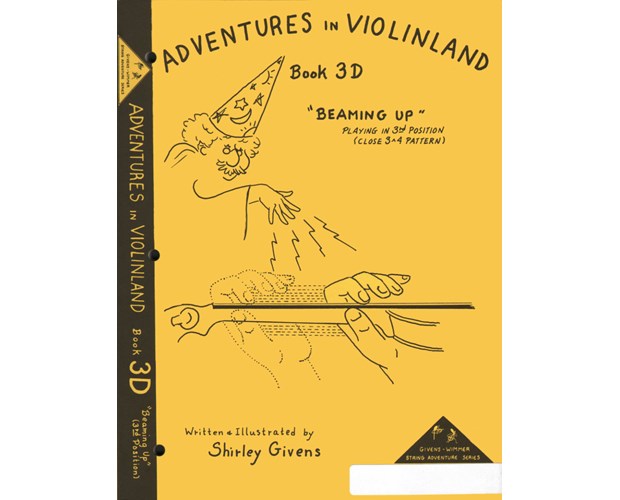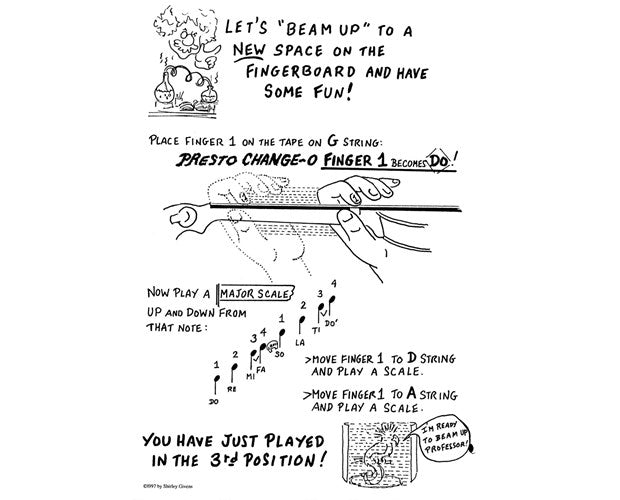Renowned pedagogue Shirley Givens' series for beginning violinists is widely respected for its clear, child-friendly format, and its sensible progression through techniques. There are lots of pictures, fun and familiar songs, and even pages for coloring! Ms.Givens uses a "Movable Do" system to teach pitch relationships and good intonation. Recommended for very young children.\n
Book 3D, Beaming Up, 3rd Position is introduced to widen the exploration of the fingerboard, and to ease the learning of the close 3-4 finger pattern. The keys of C, G and D are used. The need for good left hand shape and holding the violin securely with chin and shoulder to make shifting easier is emphasized again here. The "Note People" story, "Feelings", is an example of a way teachers can help their students to bring out the musical essence of the pieces they play. The triplet is introduced with rhythm syllables, word rhythms and violin songs.
"Young children love the violin! It is small and huggable ƒ?? and it makes sounds! How to nurture this initial enthusiasm for the instrument and to transform it into a deeper love of music is the object of my books."
"Don't be misled by the seeming simplicity of the material! The books are written from a child's point of view while incorporating the most exacting standards of modern violin technique. But there are other important features of the books that contribute to their uniqueness:
*The young student is encouraged to participate actively in his own learning by developing his own imagination.
*There is discovery and improvisation. No imitation or copying from CDs.
*Training the child's own pitch awareness from the start assures early in-tune playing.
*Note reading and harmonic awareness from the beginning cultivate musical literacy for a lifetime.
*A wonderful rhythmic foundation is established through body movement"\n
- Shirley Givens
Book 3D, Beaming Up, 3rd Position is introduced to widen the exploration of the fingerboard, and to ease the learning of the close 3-4 finger pattern. The keys of C, G and D are used. The need for good left hand shape and holding the violin securely with chin and shoulder to make shifting easier is emphasized again here. The "Note People" story, "Feelings", is an example of a way teachers can help their students to bring out the musical essence of the pieces they play. The triplet is introduced with rhythm syllables, word rhythms and violin songs.
"Young children love the violin! It is small and huggable ƒ?? and it makes sounds! How to nurture this initial enthusiasm for the instrument and to transform it into a deeper love of music is the object of my books."
"Don't be misled by the seeming simplicity of the material! The books are written from a child's point of view while incorporating the most exacting standards of modern violin technique. But there are other important features of the books that contribute to their uniqueness:
*The young student is encouraged to participate actively in his own learning by developing his own imagination.
*There is discovery and improvisation. No imitation or copying from CDs.
*Training the child's own pitch awareness from the start assures early in-tune playing.
*Note reading and harmonic awareness from the beginning cultivate musical literacy for a lifetime.
*A wonderful rhythmic foundation is established through body movement"\n
- Shirley Givens


